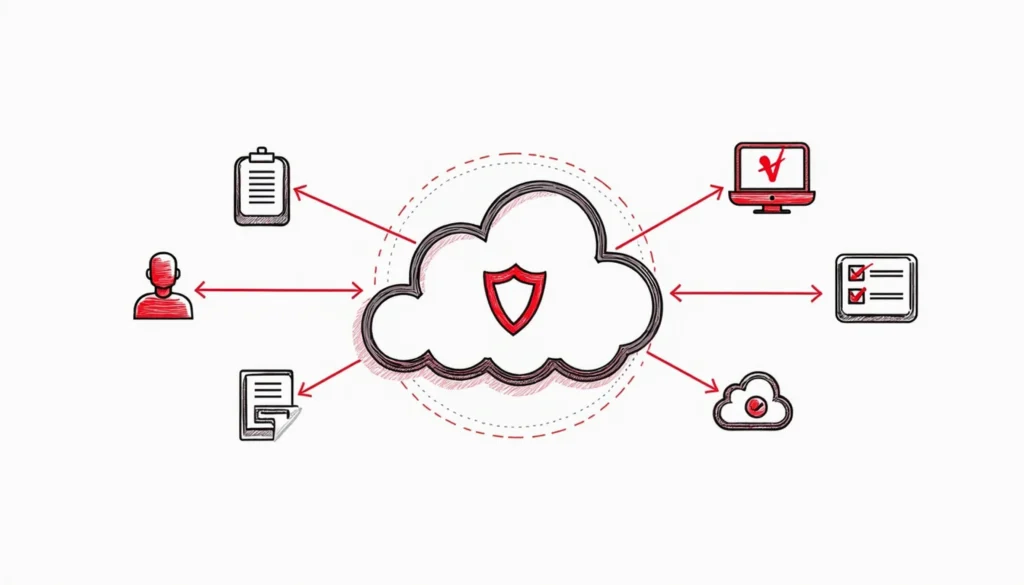In today’s cloud-centric era, safeguarding digital identities, enforcing access control, and securing data within Amazon Web Services (AWS) has become paramount for organizations of all sizes. As companies scale their cloud environments, effective identity management and access management strategies are necessary to protect their assets, maintain compliance, and streamline operations. This is where AWS Identity and Access Management (AWS IAM) comes into play. This comprehensive guide will help you understand how AWS IAM—and related services—fit into your broader identity governance strategy, ensuring secure access to your AWS account and all associated AWS resources.
Introduction to AWS IAM and the Evolving Landscape of Digital Identities
AWS IAM is a foundational AWS service designed to control and monitor access to your AWS environment. Instead of leaving identity management scattered across various systems, AWS IAM centralizes these capabilities, giving you consistent governance over IAM identities, including IAM users, groups, and roles. This holistic approach reduces complexity and enhances visibility, especially as more companies rely on multiple AWS accounts or integrate external identity providers, such as Microsoft Entra ID, to achieve seamless identity federation.

Modern organizations often handle a wide array of digital identities, from human users to machine or service accounts. They need robust tools to manage user access without compromising security. AWS IAM meets this need by providing a secure IAM system where administrators can create policies, assign permissions, and leverage AWS IAM Access Analyzer, IAM Access Analyzer, and other features to enforce a consistent security posture, even when dealing with identity and access management (IAM) requirements across multiple AWS accounts.
Core Concepts: Moving Beyond Traditional Identity and Access Management
While traditional identity and access management solutions often focus on basic credentialing and permissions, AWS IAM introduces advanced concepts designed to handle complex cloud scenarios. Beyond just creating an AWS user, you can integrate AWS IAM User and AWS IAM Group objects, implement powerful policies, leverage temporary credentials through AWS STS, and deploy AWS IAM Role assignments for flexible resource interaction. Whether you’re granting applications conditional access to an AWS Resource—like an S3 bucket—or enabling cross-account roles within an AWS Organization, IAM provides the necessary building blocks.

IAM identities in AWS aren’t limited to static users. Roles act as dynamic permission sets that services and applications can assume as needed. For instance, a role might allow an EC2 instance to interact with S3 securely without hardcoding credentials. Meanwhile, administrators can fine-tune permissions using IAM policy and AWS IAM Policy documents, as well as apply managed policies or a single managed policy for consistent authorization frameworks. This ensures precise access control that aligns with the principle of least privilege.
IAM Identity Center, AWS SSO, and the Shift to Centralized Authentication
As cloud workloads expand, centralized authentication and single sign-on (SSO) become critical. IAM Identity Center (formerly known as AWS SSO) and AWS IAM Identity Center simplify user management by providing a hub that streamlines access to multiple AWS accounts, applications, and services. By connecting with external identity providers, such as Microsoft Entra ID, organizations can unify sign-on experiences and enforce enhanced security measures like multi-factor authentication, password policy, and even conditional access conditions.
By adopting identity federation, you can integrate on-premises directories or leverage AWS Directory Service to bridge the gap between on-prem and cloud-based identity management systems. This approach strengthens identity governance and ensures that user access remains consistent, secure, and manageable across various authentication domains.
Enhancing Security with IAM Access Analyzer, Policies, and Governance
A critical part of identity management in AWS involves continuous monitoring. Tools like IAM Access Analyzer and Access Analyzer evaluate policies to identify unintended public or cross-account access. When coupled with a thoughtful password policy, access key rotation strategies, and the structured administration of AWS IAM Policy documents, these capabilities form a strong defensive posture.
To align your environment with best practices, regularly review and refine identity and access management configurations. Consider adopting the AWS CLI, AWS Console, AWS SDK, or AWS API to programmatically interact with IAM, which helps automate tasks like rotating credentials or updating policies. With careful planning, you can support multiple AWS accounts and maintain a scalable, secure structure, ensuring that user access remains tightly controlled.
Practical Steps: Implementing and Managing AWS IAM
1. Creating and Managing IAM Users and Groups:
Begin by organizing users into AWS IAM Group objects that reflect departments or job functions. Assign a managed policy or custom IAM policy to these groups to streamline permissions. Limit direct permissions to the root user and rely on delegated administrators for routine tasks. Ensure every IAM user meets a strict password policy and consider enabling MFA for heightened security.
2. Defining AWS IAM Roles:
Use AWS IAM Role objects to grant temporary access to resources. For example, let an EC2 instance assume the role of reading data from an S3 bucket. This approach reduces the exposure of static credentials and strengthens access control. Roles are equally vital for third-party integrations, allowing external tools or partner applications to interact with AWS resources securely.
3. Implementing IAM Policies and Managed Policies:
Create or attach AWS IAM policy documents tailored to your environment. Use managed policies to standardize common permission sets. Before deployment, simulate these policies with the IAM Access Analyzer. This proactive stance ensures that no unintended permissions slip through and that users, roles, and groups have just the right level of access.
4. Scaling Identity Management with Identity Federation and AWS Organization:
Integrate identity federation to connect with external identity providers and unify sign-on experiences. Use AWS Organization to manage multiple AWS accounts, consolidating governance and security controls in one place. When combined with the IAM Identity Center, these strategies streamline cloud operations, maintain consistent access management, and strengthen identity governance.
Leveraging Service Accounts, AWS STS, and Conditional Access
As workloads diversify, you may rely on a service account to run automated tasks. Ensure that these service accounts follow the principle of least privilege by assigning only necessary permissions. When granting temporary credentials, use AWS STS to minimize risk and maintain compliance. Further, enhances security by applying conditional access rules that grant resource privileges only under specific circumstances—such as IP-based restrictions or MFA requirements.
Best Practices for AWS IAM and Identity Management
- Enforce Strong Authentication:
Enable MFA for all IAM users and identity federation logins. Consider integrating AWS Directory Service or third-party identity providers for uniform authentication standards.
- Regularly Review Policies and Permissions:
Continually refine IAM roles, groups, and policies. Make use of IAM Access Analyzer or AWS IAM Access Analyzer to confirm that your policy settings align with security best practices.
- Implement Identity Governance:
Treat identity management as an ongoing process. Adopt tools and workflows that support identity governance and regularly audit user access, ensuring that only the right people (or services) have access to the right resources.
- Leverage the AWS CLI, AWS API, and AWS SDK:
Automate repetitive tasks like password resets, user provisioning, and access key rotations. Automation reduces human error and keeps your environment aligned with your identity access management goals.
Work with an AWS Advanced Tier Partner for Tailored Solutions
Are you ready to strengthen your AWS IAM implementation? At Futuralis, an AWS Advanced Tier Partner, we excel in cloud migrations, modernization, and managed services for startups and SMBs. We understand how critical secure access and comprehensive identity management are to your business growth. With personalized service, competitive pricing, and dedicated support, we help you establish a robust identity and access management framework—whether you’re integrating AWS IAM Identity Center, deploying AWS Directory Service, or fine-tuning your IAM system with carefully crafted policies.

Talk to an AWS Expert Today and discover how Futuralis can support your journey in the cloud. By partnering with experts who understand AWS IAM and related services, you’ll lay the foundation for long-term success, ensuring efficient, secure, and scalable identity management for your entire AWS environment.
Experience the Futuralis difference and unlock your organization’s full potential with a secure, well-governed AWS identity landscape.



